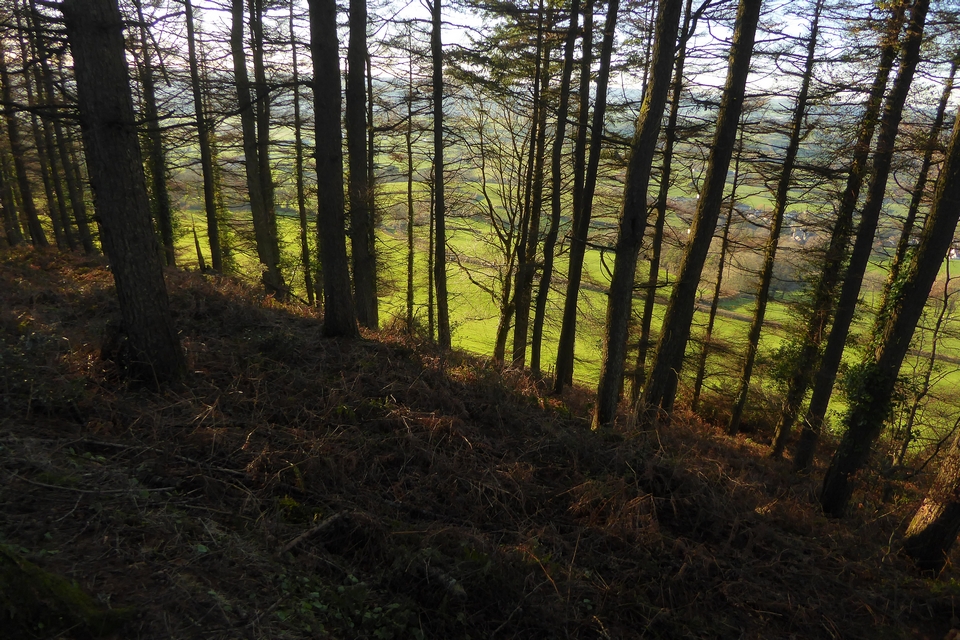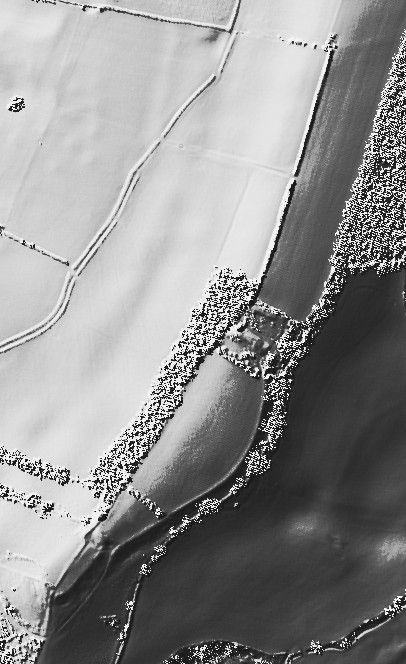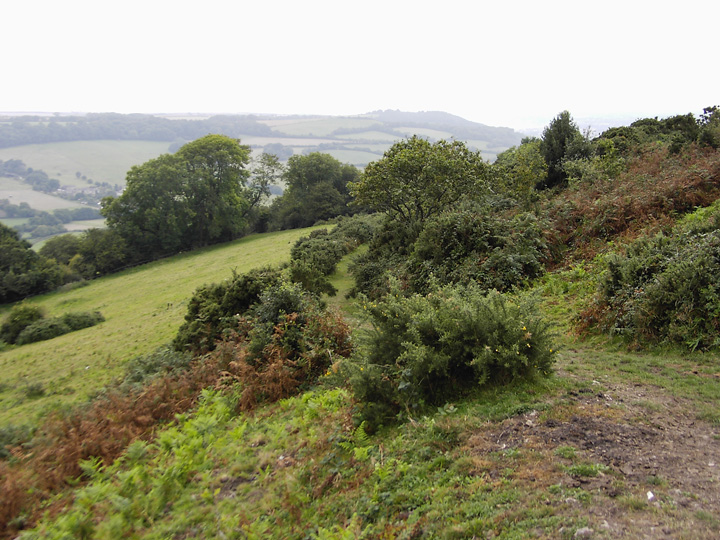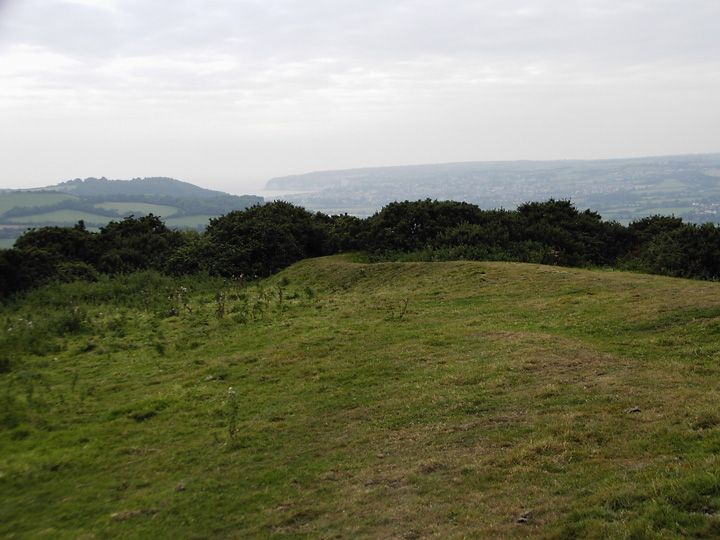
The southwestern annexe, looking towards the fort.

The southwestern annexe, looking towards the fort.

Looking along the eastern rampart.

The outer bank at the northeastern end of the fort.

The very steep drop on the western flank, looking down on Musbury village and the Axe valley.

Looking along the inner northeastern bank.

Looking towards the outer bank from the inner bank at the northeastern end of the fort.

Tangled undergrowth on the massive inner bank at the northeastern end of the fort.

The ditch below the southwestern bank, looking along the annex towards Seaton and the Devon coast. The prominent wooded hill to the left of centre is Hawkesdown Hill fort.

Fort interior from the southwestern bank.

The massive bank at the southwestern end of the fort.

Open Source Environment agency LIDAR

The interior of the hillfort looking north, the white tape shows the inner bank.

Taken from the east rampart it looks down on the lower outer ditch and bank.

The outer southern ditch and bank.

The lower west rampart looking down from the ridge of the hill.

The inner south east bank showing where it turns down the hill to the west.
Visited 20 January 2023. After a Christmas and New Year spent slowly getting over Covid, a family gathering takes me to Musbury at the eastern fringes of Devon. A quick check of the OS map reveals a hillfort within a short distance of the village, a test for my weakened legs.
It’s a beautiful afternoon when I arrive in the village after a sunny and scenic train journey to Axminster, and I’m raring to get out and visit the fort. A fairly gentle ascent follows a farm track southeast from the church, giving good views of the profile of the wooded fort from the west. A stile gives access to fields, thankfully still frozen to keep the mud at bay, the route gradually getting steeper the further up I get. At length a footpath heads off up to the fort itself, and it’s only a few minutes before I’m at the massive southwestern rampart.
The earthwork here is very impressive, cutting off the interior of the fort from some kind of much less defined southwestern annexe. There are great views across the Axe valley to the west, and down to the coast at Seaton, partially hidden by another hillfort on Hawkesdown Hill.
I follow the rampart along the northwestern crest of the ridge. Here the earthwork is under trees and much smaller, relying on a very steep hillside to do most of the defensive work. The interior of the fort is a grassy field, the grass deep and tussocky and not that easy to walk through. Heading further north the way is barred by a fence, over which I can see a second huge earthwork, even taller than the one at the southwest. I follow the fence round to the corner of the field and a pedestrian gate, which gives access to the more overgrown northern part of the fort.
There are two enormous parallel banks here, forming the northeastern defences. Both are heavily overgrown with dead bracken and bramble, but this is definitely the time of year to come as it’s possible to walk along the tops of both of them, the undergrowth trying to catch my stumbling legs and trip me over. In the woods at the western end of the banks I startle a couple of deer, which run pell-mell down the field.
After disentangling myself from the vegetation I follow the southeastern side of the ridge round. Again there’s a lesser rampart running along the crest of the hill, but the natural slope is utilised to form the defences. Back at the southwestern end of the fort I have a look at the slight bank of the annexe. This a great little fort, the views are terrific on such a lovely day.
It’s cold and I’m tiring quickly, my recuperation not yet complete. I head back down the way I came, the sun sinking and the still frozen ground preparing for another hard frost. Tea and warmth await below, and despite the wobbly legs by the time I reach the church, I’m delighted to have been able to visit this fine site in such perfect conditions.
Finally I have found the time to visit this Devon hillfort. It’s a bit odd in it’s design as it seems to be split into two parts. The northern two thirds is a conventional enclosure, i.e. ramparts and ditches surrounding a large open interior on the ridge of a hill. The unusual part is the southern third which runs down the western facing slope of the hill, the east rampart runs along the crest of the hill and turns down the hill.
Another curious feature is at the north end and appears to be two large mounds, a bit like long barrows, which are separate from the main ditches and banks. Unfortunately they were so covered in gorse and bracken they could not be properly investigated, this gives me the excuse to go back in the winter for another look.
Haven’t found a story. But this is quite cool:
Remains of what were undoubtedly British trackways connecting Musbury with Hochsdon and Membury and also with more distant camps, no fewer than twelve of which are visible in ordinary weather, and, of course, could be communicated with at night by means of the beacon-fire, can be distinctly traced.
The camps include those at Woodbury, Sidbury, Blackbury, Dumpton, Hembury, Belbury, and Stockland, in Devonshire; Neroche, in Somersetshire, to the north; and Eggardun, in Dorsetshire, to the east. The panoramic view of the Valley of the Axe is one of the best throughout its extent, and the eye ranges far beyond that lovely tract – over hill and dale, with water, timber, and all the other accessories of a perfect English landscape.
p. 750 in “The Book of the Axe” by George Pulman (1875).
From the Gazeteer of Great Britain and Ireland (1868).
“Musbury Castle a double ditched camp of 20 acres in this parish”.






















